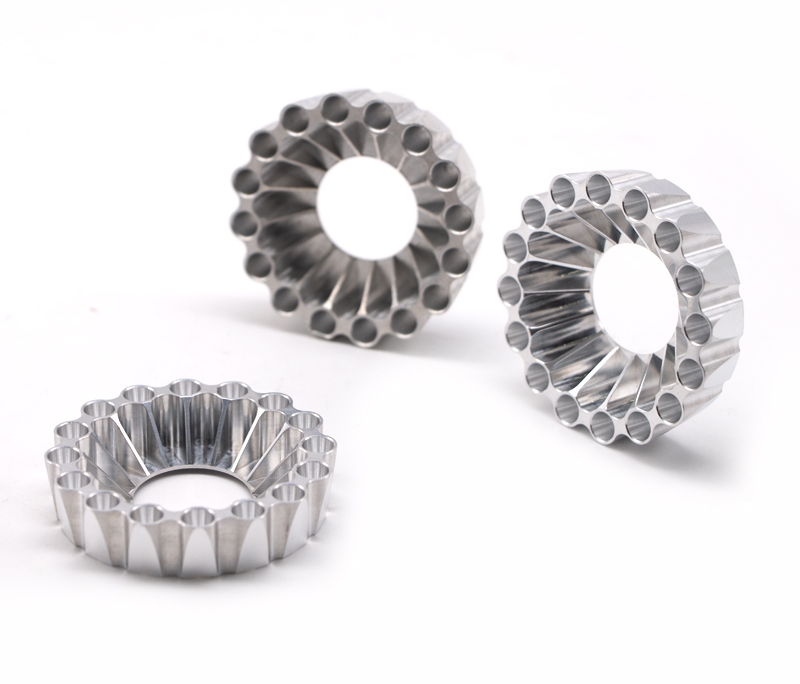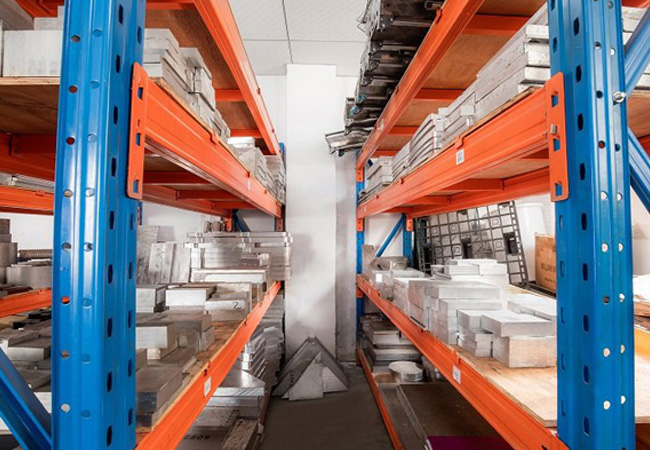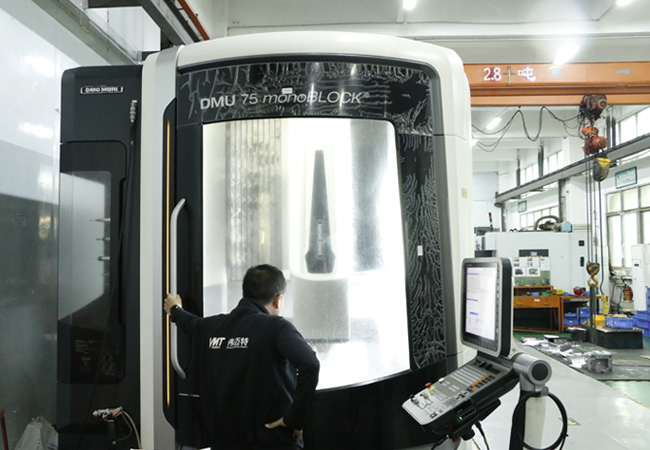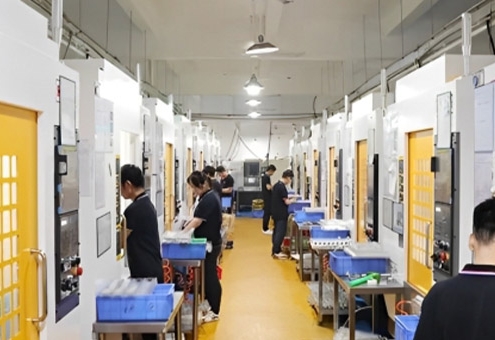How to Calculate CNC Machining Cost Per Hour?
Are CNC machining costs making you hesitate about your next project? Many face challenges in estimating costs accurately, risking budget overruns. Discover the key cost factors and strategies to optimize your CNC machining budget.
CNC machining costs range between $30 and $200 per hour depending on machine type, material, and complexity. Understanding these factors helps in calculating accurate costs and optimizing expenses effectively.
Let’s dive into the key factors influencing CNC machining costs and how to manage them efficiently.
What is CNC Machining?
CNC machining, or Computer Numerical Control machining, is a manufacturing process where pre-programmed computer software dictates the movement of tools and machinery. This enables precision cutting, milling, and shaping of materials into custom parts with tolerances as low as 0.01 mm. CNC machining is widely used for custom machined parts, metal machining services, and industrial applications requiring consistent quality.
How to Calculate CNC Machining Cost Per Hour?
Calculating the hourly cost of CNC machining involves breaking down multiple factors that contribute to the total expense of running a CNC machine. Here are some of the key factors that make up the equation:
Machine Depreciation
This is the cost of the CNC machine itself spread over its useful life. For example, if a $100,000 CNC machine has a lifespan of 10 years and runs about 2,000 hours per year, that equates to $5/hour in depreciation. More advanced or multi-axis machines may have higher initial costs, which increase this component.
Labor Costs
Labor includes the wages of machine operators, setup technicians, and possibly programmers. Operator wages can range from $20 to $50 per hour, depending on skill level and region. Highly skilled CNC technicians or complex jobs may cost more due to setup time and supervision.
Material Costs
The type and amount of raw material used, such as aluminum, stainless steel, or titanium—have a direct impact on cost. Pricing is influenced by material grade, part geometry, and waste rate. Bulk material purchases or optimized nesting can help reduce this expense.
Energy Consumption
CNC machines require significant power, especially high-speed or heavy-duty models. Power costs depend on machine size, motor rating, and operation time. For example, a 20 kW machine running continuously will incur much higher utility charges than a low-power desktop CNC.
Overheads and Tooling
This includes indirect costs such as shop rent, insurance, machine maintenance, tooling wear, software licensing, and cooling fluids. Cutting tools, especially for hard materials or precision applications, wear out and need regular replacement—adding to per-hour costs.
Programming and Setup Time
Complex parts may require custom CNC programming or special fixture setups. Although these are often one-time costs, they can be spread over the batch to calculate a more accurate per-part cost.
Profit Margin
Finally, businesses add a markup or margin to cover risk, reinvestment, and profit. This typically ranges from 10% to 30% depending on volume, customer relationship, and part complexity.
By carefully considering and summing all these factors, CNC machining manufacturers can calculate a realistic CNC machining cost per hour, which is essential for accurate quoting, budgeting, and maintaining profitability.
CNC Machining Cost Factors for More Accurate Job Quotes
Accurately estimating CNC machining costs starts with understanding the critical factors that influence pricing. These elements impact quotes and are essential for effective project planning and budgeting.
Machine Type
The type of CNC machine significantly affects the cost per hour. For simpler tasks like cutting or shaping, basic equipment such as a CNC end mill provides a cost-efficient solution. However, projects requiring intricate designs and tight tolerances often demand advanced equipment like 5-axis CNC machines, which can operate on multiple axes simultaneously.
These machines are crucial for applications such as precision CNC machining but come with higher operational and maintenance costs. Moreover, high-performance machines like metal CNC machines are engineered for tough materials, which accelerates wear and increases the need for specialized tools. Their versatility and accuracy justify their expense, especially for critical industries like aerospace and medical.
Material
The choice of raw materials can dramatically influence machining costs. Metals like aluminum are cost-effective and easy to machine, making them ideal for custom machined parts in automotive and electronics. Stainless steel offers better durability but costs more due to machining difficulty. High-performance materials, such as titanium or Inconel, are significantly more expensive because they require slower machining speeds, more robust tooling, and precise setups to handle their hardness and heat resistance.
Additionally, plastics are economical for prototyping but may lack the mechanical properties required for industrial applications. Material availability, size, and form (sheet, rod, or custom stock) also affect the overall expense.
Part Complexity
Complex part designs often require advanced programming, precise tooling, and extensive machine time, all of which add to the cost. Features such as deep pockets, sharp corners, thin walls, or multi-sided machining necessitate multiple setups and specialized fixtures, increasing labor and machine utilization.
For example, intricate components for CNC machining for medical devices often demand strict tolerances, requiring high levels of expertise and detailed quality checks. Complex geometries also result in increased tool wear, adding to the operational expense.
Labor Costs
Skilled labor is essential for ensuring the precision and quality of CNC machined parts. Operators are responsible for programming machines, setting up fixtures, and monitoring production, which requires expertise and experience, especially when working with advanced multi-axis machines. Labor rates vary depending on the complexity of the task and the region. For example, operators managing high-stakes applications such as industrial CNC machining or custom CNC machine projects may command higher wages, which reflect in the machine shop hourly rate.
Additional Considerations
Batch Size: Producing parts in large batches often reduces the cost per unit through economies of scale. In contrast, smaller runs or prototypes are more expensive due to the setup time, tooling expenses, and lower material utilization.
Lead Time: Projects with tight deadlines may incur rush fees to prioritize production, especially for complex parts requiring advanced CNC machining service capabilities.
Post-Machining Processes: Surface treatments like powder coating, plating, or specialized finishes are often necessary for functional or aesthetic purposes. These steps involve additional costs for both materials and labor but are critical for achieving the final product’s desired quality.
How Much Does 5-Axis Machining Cost Per Hour?
5-axis machining is the pinnacle of CNC precision, with costs ranging from $75 to $200 per hour. These machines offer unparalleled capabilities for intricate projects like custom machined parts or auto CNC machining, making them indispensable in industries like aerospace and healthcare.
Note: This cost is only a rough guide, the final amount will depend on the type of machine used, the materials required and the complexity of the machining.
Key factors affecting 5-axis machining costs include:
Machine Complexity: 5-axis machines are expensive to purchase and operate.
Setup Time: Precision setups increase labor and machine time.
Part Design: Complex geometries require advanced programming and longer machining times.
While costly, 5-axis machining delivers unmatched quality for high-stakes applications, making it worth the investment for critical projects.
Different Machine Types and Their Costs Compared
CNC machines vary in capability, precision, and cost. Comparng machine types:
3-Axis Machines
3-axis CNC machines are the most cost-effective, operating on three linear axes—X, Y, and Z. They are perfect for straightforward projects like CNC wood cutting, CNC gifts, and basic industrial parts. Hourly rates range from $30 to $50, making them ideal for simple designs or prototypes.
However, their inability to handle complex geometries limits their use for intricate or high-precision applications. Industries such as woodworking and basic metalworking benefit most from these machines, thanks to their low cost and efficiency.
Note: This cost is only a rough guide, the final amount will depend on the type of machine used, the materials required and the complexity of the machining.
4-Axis Machines
4-axis CNC machines add a rotational axis (A-axis) to the standard three, allowing for the machining of curved or cylindrical surfaces. These machines are frequently used for custom CNC work and industrial CNC machining where moderate complexity is required. With an hourly rate of $50 to $80, they balance cost and functionality, offering greater precision than 3-axis machines.
Note: This cost is only a rough guide, the final amount will depend on the type of machine used, the materials required and the complexity of the machining.
Applications include creating custom machined parts for automotive and consumer electronics, where rotational machining is a must. Their versatility makes them a popular choice for medium-complexity projects that require improved efficiency and accuracy.
5-Axis Machines
5-axis CNC machines are the pinnacle of versatility, operating on five simultaneous axes. They are indispensable for producing intricate designs and maintaining tight tolerances. Common applications include CNC machining for medical devices, aerospace components, and high-end electronics, where precision and reliability are critical.
These machines minimize setup time by machining multiple sides of a part in a single operation, ensuring exceptional accuracy. Hourly rates typically range from $80 to $150 or higher, reflecting their advanced capabilities and demand. While expensive, their ability to handle complex tasks makes them a vital investment for industries requiring top-tier machining.
Note: This cost is only a rough guide, the final amount will depend on the type of machine used, the materials required and the complexity of the machining.
Specialized Machines
Beyond standard configurations, specialized CNC machines cater to unique requirements. For instance, 24×24 CNC routers are suitable for small-scale projects like signage or prototyping, while metal CNC machines excel at machining hard materials like titanium or stainless steel. Machines designed for auto CNC machining or CNC online services further expand the scope of applications. These specialized tools vary widely in cost but provide tailored solutions for niche tasks, ensuring efficiency and quality for specific project needs.
How to Lower CNC Machining Costs?
Optimizing CNC machining costs is essential for staying within budget while maintaining the desired quality and precision of your parts. Here are some strategies to reduce CNC machining expenses:
1. Design Simplification
Simplifying your design reduces machining time and tool wear, lowering costs. Minimize complex features, tight tolerances, and unnecessary details to streamline the process, reduce machine time, and lower overall production costs. A simpler design requires fewer setups and less post-processing, making the entire machining process more cost-efficient.
2. Batch Production
Batch production allows you to take advantage of economies of scale. By producing multiple parts in a single production run, the overhead costs are spread across more units, reducing the per-unit cost. This method maximizes machine time, reduces downtime, and makes the process more efficient, especially for high-volume orders.
3. Supplier Selection
Selecting the right supplier can significantly impact your costs. Compare pricing structures of different CNC online services and evaluate their capabilities. Choose a provider that balances competitive pricing with quality and on-time delivery, ensuring you don’t compromise on the final product while reducing costs.
In Conclusion
Accurately estimating CNC machining costs involves understanding machine type, material, and complexity. Optimizing designs and working with trusted suppliers can effectively manage your budget.
Start Your CNC Machining Project at VMT
At VMT, we combine 15 years of machining experience with a strong commitment to quality and service. As a trusted CNC machining factory, we focus on delivering high-precision, high-quality parts that meet the needs of industries like automotive, aerospace, medical, and more. Whether you need a prototype, small batch production, or custom parts, we’ve got you covered.
Frequently Asked Questions About CNC Machining
How Long Does CNC Machining Take?
The time required for CNC machining depends on factors like part complexity, material, and machining process. Simple parts can take just minutes, while complex designs may take hours or even days to complete, including setup time and finishing.
How to Calculate CNC Machine Run Time?
To calculate CNC machine run time, use the formula:
Run Time = (Part Size ÷ Cutting Speed) × Number of Passes.
This gives an estimate, but you should also factor in tool changes, setup time, and other operational factors.
What Is the Ideal Cutting Rate?
The ideal cutting rate depends on the material being machined, tool type, and machine capabilities. Cutting rates should be optimized to balance speed and tool wear, typically measured in surface feet per minute (SFM) for materials like aluminum or steel.







